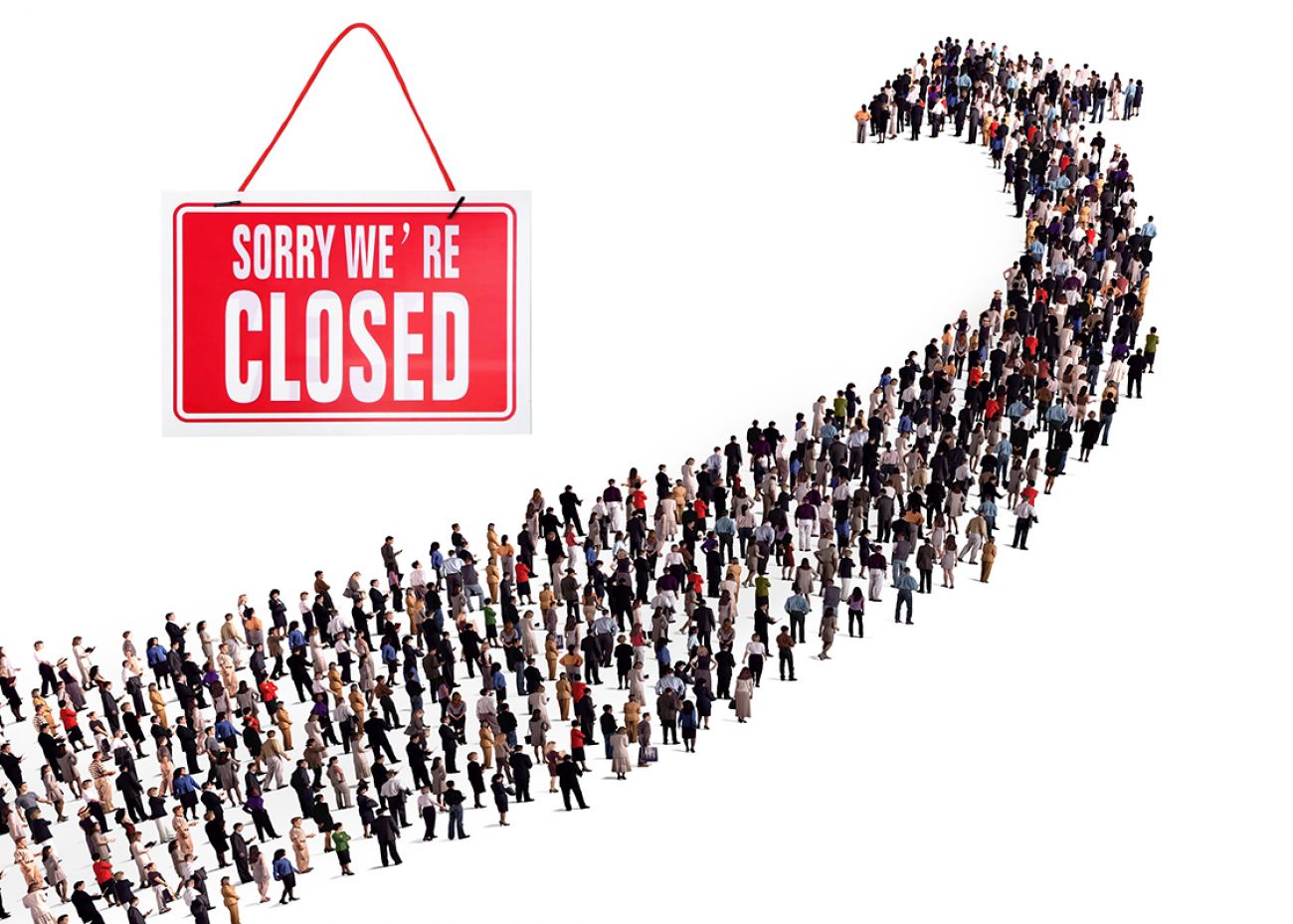‘Depression-level’ Michigan unemployment tops 1 million from coronavirus

Michigan’s wave of unemployment filings are making it tough for economists to predict the extent of decline still headed the state’s way.
After another 219,320 state residents moved into the system over the past week, few of the scenarios look hopeful.
Charles Ballard, an economist at Michigan State University, looks at the most recent jobless numbers and finds them difficult to describe.
“You kind of run out of adjectives after a while,” he said. “Stunning. Astonishing. Terrifying.
“This is not good.”
Data released Thursday show more than 1 million state residents (1,041,015) have now filed for unemployment benefits, according to the federal Bureau of Labor Statistics.
The filings represent about 21 percent of the state’s workforce, which puts Michigan second only to Hawaii in the percentage of its workforce applying for jobless benefits. However, Michigan has 7 times the population of Hawaii.
Until coronavirus cases reached Michigan, about 180,000 people had been considered unemployed, giving the state an unemployment rate of 3.6 percent. Gov. Gretchen Whitmer issued a stay-at-home order on March 24, with that initial order extended this month until April 30.
As part of that order, non-essential businesses were ordered to close. And employers once facing a few weeks of shutdown then had to confront a longer duration and rapidly deteriorating markets.
The most recent jobless number tops the worst-case estimate of what the coronavirus could mean to Michigan that Anderson Economic Group put out in March. At that time, projecting one million unemployed seemed like a stretch for the state.
Now, CEO Patrick Anderson said, with that estimate reached and still more filings possible as the eligibility requirements for cash benefits expand, the state needs to consider whether any additional workers can get back on the job.
“I don’t see any way that Michigan can recover everything that it’s lost in 2020,” Anderson said. “We are at Depression-level unemployment right now, and we still have a blanket stay-at-home order in place.”
“We can start to get some … income into the shattered economy,” he said.
Anderson’s recommendations put public health first, he said.
“You kind of run out of adjectives after a while. Stunning. Astonishing. Terrifying. This is not good.” — MSU economist Charles Ballard
But the most recent data open the opportunity to consider regional differences in health risks, particularly involving jobs that may involve low public contact. It’s similar to part of the message delivered by about 4,000 people in Lansing on Wednesday, when a number of lawn service companies and home repair businesses were part of a political protest against Whitmer’s strict shutdown order.
On the geographical side, Anderson said, “there’s no sense in having the same restrictions in Wayne, Oakland and Macomb counties as you have in Northern Michigan and the Upper Peninsula, Thumb and rural counties.”
Undetermined, he said, is what kind of impact those changes would have on employment rates over coming months.
Also unclear is how many more people will be applying for unemployment benefits and what the claims signal for the overall employment situation in Michigan. Applications only give one glimpse into the jobs picture. Some applicants will need to seek long-term benefits, but people dealing with short-term layoffs also can apply for benefits.
So far, Michigan’s unemployment system has struggled to stay ahead of the wave of applicants. After the state computer system crashed, the Department of Labor and Economic Opportunity (LEO) announced expanded staffing and technology assistance to aid more people in navigating the system.
Between March 30 and April 15, about 200 new call center workers were added to help applicants — many of whom had never applied for unemployment benefits before — navigate the system, said Jason Moon, communications director for LEO. About 100 people will form a dedicated technology team, with another 150 temporary workers added to help process claims.
By this week, Moon said, 744,654 people were receiving benefits payments.
That contrasts to the 600,000 jobs gained since Michigan hit bottom in the Great Recession, Ballard said.
But Ballard says there is a chance job losses will slow. He expressed caution about relaxing the stay-at-home order, but also said that some of those job losses can be recouped.
“If we can do it in a systematic, careful way, one step at a time … some of the jobs will come back.”
Anderson’s advice for policy makers is to start considering that timing now.
“May 1 is a long ways away,” he said. “One million people are unemployed right now. When we’re in such serious straits, we should not be waiting until May 1.”
RESOURCES:
- Hey, Michigan, here’s how to make a face mask to fight coronavirus
- Michigan coronavirus dashboard: cases, deaths and maps
- Michigan families can get food, cash, internet during coronavirus crisis
- How to give blood in Michigan during the coronavirus crisis
- 10 ways you can help Michigan hospital workers right now
- Michigan coronavirus Q&A: Reader questions answered
- How to apply for Michigan unemployment benefits amid coronavirus crisis
Business Watch
Covering the intersection of business and policy, and informing Michigan employers and workers on the long road back from coronavirus.
- About Business Watch
- Subscribe
- Share tips and questions with Bridge Business Editor Paula Gardner
Thanks to our Business Watch sponsors.
Support Bridge's nonprofit civic journalism. Donate today.
See what new members are saying about why they donated to Bridge Michigan:
- “In order for this information to be accurate and unbiased it must be underwritten by its readers, not by special interests.” - Larry S.
- “Not many other media sources report on the topics Bridge does.” - Susan B.
- “Your journalism is outstanding and rare these days.” - Mark S.
If you want to ensure the future of nonpartisan, nonprofit Michigan journalism, please become a member today. You, too, will be asked why you donated and maybe we'll feature your quote next time!




